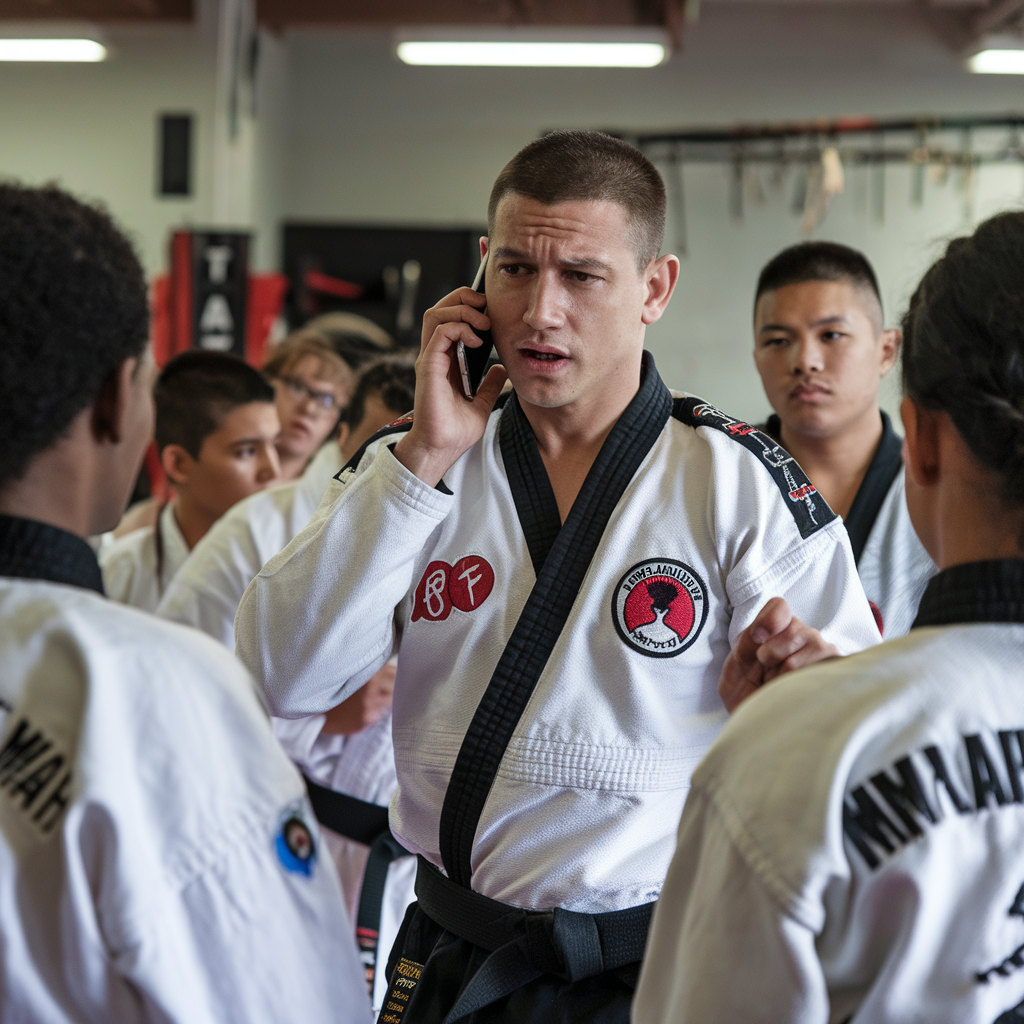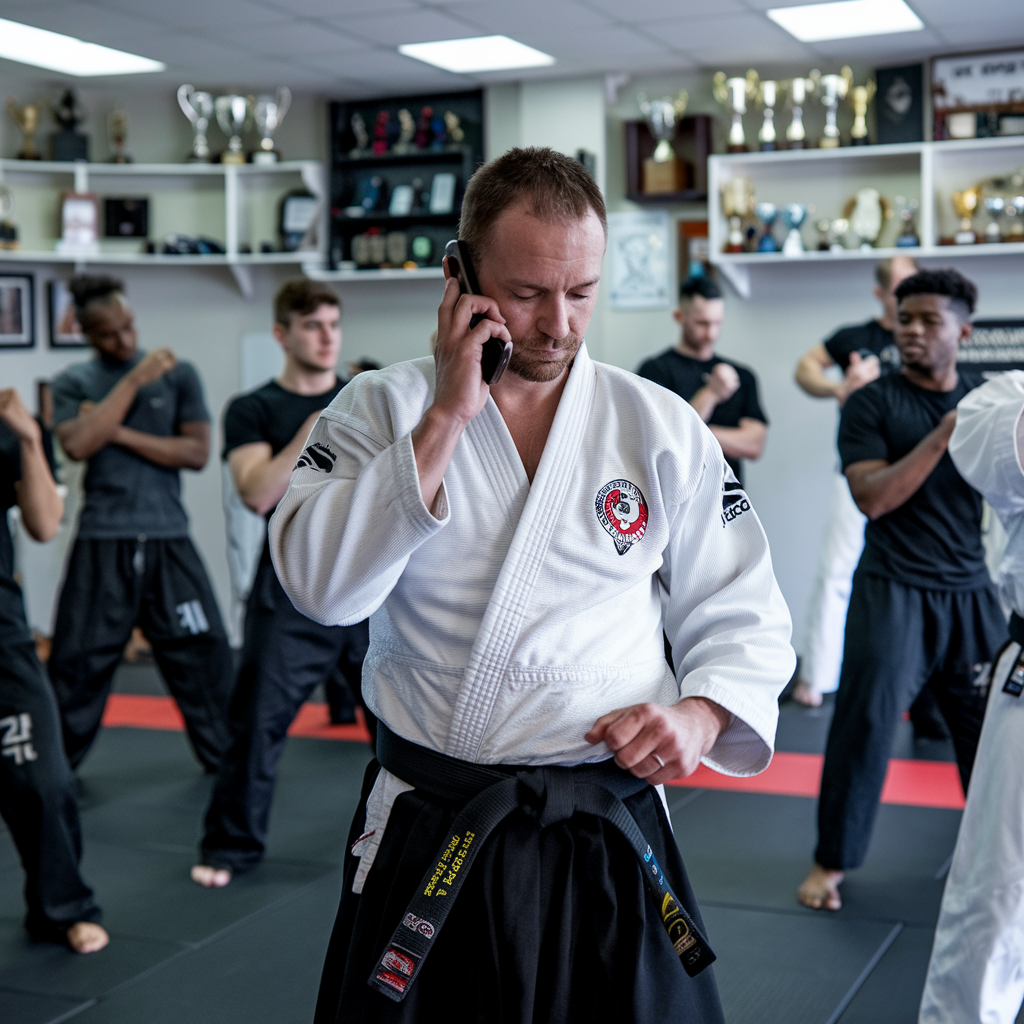
In a world where speed and instant gratification are celebrated, patience and control can seem like lost virtues. Yet, those who practice martial arts understand the profound power of stillness—the ability to remain composed, patient, and in control, even when faced with chaos. Whether you’re on the mat or navigating life’s daily challenges, these principles can transform not only how you react but also how you thrive.
Martial arts—whether it’s Karate, Brazilian Jiu-Jitsu, Muay Thai, or Aikido—go far beyond physical techniques. They cultivate a mindset rooted in discipline, patience, and self-mastery. This article explores how martial arts develop these qualities and how you can apply them to everyday life.
1. The Power of Patience: Why Waiting is a Strength
In martial arts, acting too quickly or too emotionally often leads to mistakes. Patience is not passive—it’s a powerful tool that allows you to observe, analyze, and respond effectively. Whether you’re waiting for the right opening in a fight or handling a tough situation at work, patience helps you maintain clarity and control.
A. Delayed Gratification: The Long Road to Mastery
Martial artists understand that mastery takes time and consistent effort. There are no shortcuts. Beginners start with basic techniques, repeating them endlessly until they become second nature. This repetitive practice builds patience, as progress is often slow but steady.
Example:
A white belt in Brazilian Jiu-Jitsu may struggle for years before earning a blue belt. Each sparring session requires patience—not only to survive tough rolls but to trust that small improvements accumulate over time.
Life Application:
- Break large goals into small steps: Focus on daily improvements instead of instant results.
- Trust the process: Recognize that meaningful growth takes time.
- Practice delayed gratification: Prioritize long-term success over short-term rewards.
B. Responding, Not Reacting
In martial arts, impulsive reactions often leave you vulnerable. Skilled fighters wait for the right moment to strike, remaining calm while observing their opponent’s patterns. This patience translates directly to real life, where emotional control leads to better decision-making.
Example:
In Aikido, the practitioner waits for an attacker’s energy to move toward them, then redirects that force. This principle teaches that reacting too soon can escalate conflict, while patience allows you to handle situations with grace.
Life Application:
- Pause before reacting: Take a breath to assess the situation before responding.
- Control emotional impulses: Practice mindfulness to avoid reacting out of anger or fear.
- Be intentional: Choose your actions carefully instead of letting emotions drive you.
2. Cultivating Control: Mastering Your Mind and Body
Control in martial arts extends beyond physical movements—it’s also about mental and emotional discipline. Practitioners learn to remain composed under pressure, even when faced with aggressive opponents or difficult circumstances.
A. Control Through Discipline
Martial arts require rigorous self-discipline. From showing up to class consistently to maintaining focus during training, practitioners develop the ability to control their actions, habits, and thoughts.
Example:
A Muay Thai fighter adheres to a strict training regimen, waking up early for conditioning and spending hours refining techniques. This discipline not only improves performance in the ring but also builds resilience and control over personal habits.
Life Application:
- Create daily routines: Build structure to reinforce self-discipline.
- Stay consistent: Commit to regular practice, even when motivation fades.
- Set boundaries: Learn to say no to distractions and maintain focus on your priorities.
B. Emotional Control Under Pressure
In a fight, losing your temper weakens your strategy. Martial artists are trained to stay calm and maintain emotional balance, even in the face of pain or aggression. This control allows for clearer thinking and better judgment.
Example:
In Judo, competitors face high-stakes situations where panic could mean defeat. The best judokas remain calm, using their opponent’s aggression against them while keeping their emotions in check.
Life Application:
- Practice mindfulness: Use meditation techniques to develop emotional awareness.
- Stay composed in conflict: When tensions rise, prioritize calm communication.
- Develop stress management techniques: Use breathwork to calm your nervous system during pressure.
3. The Balance Between Stillness and Action
Martial arts teach that stillness is not inaction—it’s the foundation from which effective action emerges. Whether in a physical fight or a life challenge, the ability to wait, observe, and strike at the right moment is a critical advantage.
A. Timing is Everything
An experienced martial artist knows that the right move at the wrong time can lead to failure. Timing requires a balance of patience and readiness—being prepared to act without rushing the process.
Example:
A boxer doesn’t throw punches recklessly. Instead, they wait for an opening, carefully timing their strikes when their opponent leaves a gap. This patience wins fights through precision rather than brute force.

Life Application:
- Be strategic: Don’t rush into decisions—gather information first.
- Trust your preparation: Confidence comes from consistent effort, allowing you to act decisively when the time is right.
- Practice patience in relationships: Let conversations unfold naturally rather than forcing outcomes.
B. Stillness as Inner Strength
Martial artists often train in forms or kata—structured patterns of movement designed to develop precision and stillness. These forms teach practitioners to remain centered and grounded, no matter what’s happening externally.
Example:
Tai Chi, often called “meditation in motion,” emphasizes slow, deliberate movements. This practice develops inner calm and physical control, which can be applied to handling daily stress.
Life Application:
- Find moments of stillness: Integrate quiet reflection into your day.
- Ground yourself: Practice techniques like deep breathing or visualization.
- Respond with calmness: In heated situations, draw from your inner stillness to maintain peace.
4. Applying Martial Arts Wisdom to Daily Life
The lessons of patience and control extend far beyond the dojo—they shape how we interact with others, manage challenges, and pursue long-term goals.
A. Leadership and Decision-Making
Great leaders exhibit the same qualities that martial artists develop: patience in planning and control under pressure. They avoid rash decisions and carefully assess situations before taking action.
Example:
A martial arts master doesn’t overcommit in a fight. Similarly, effective leaders know when to act decisively and when to wait for better opportunities.
Life Application:
- Lead with patience: Take the time to listen before making decisions.
- Stay composed: In high-stakes situations, maintain emotional control to inspire confidence.
- Model self-control: Demonstrate calmness to set a positive example for others.
B. Building Stronger Relationships
Patience and control foster healthier relationships by improving communication and conflict resolution.
Example:
In martial arts sparring, partners learn to engage without harming each other. Similarly, in relationships, patience allows for understanding and thoughtful dialogue.
Life Application:
- Be patient with others: Allow room for growth and mistakes.
- Control emotional reactions: Respond to conflict with empathy and calm.
- Practice active listening: Give others your full attention without interrupting.
Conclusion: Strength in Stillness
Martial arts teach us that true strength lies in patience and control. Whether in combat or daily life, these principles empower us to navigate challenges with grace and confidence. By cultivating stillness, practicing self-discipline, and controlling our emotions, we gain an invaluable edge in a chaotic world.
The next time you face a difficult situation, channel the wisdom of martial arts: be patient, stay grounded, and respond with intention. In doing so, you’ll discover that the greatest power lies not in how quickly you move—but in the strength of your stillness.

